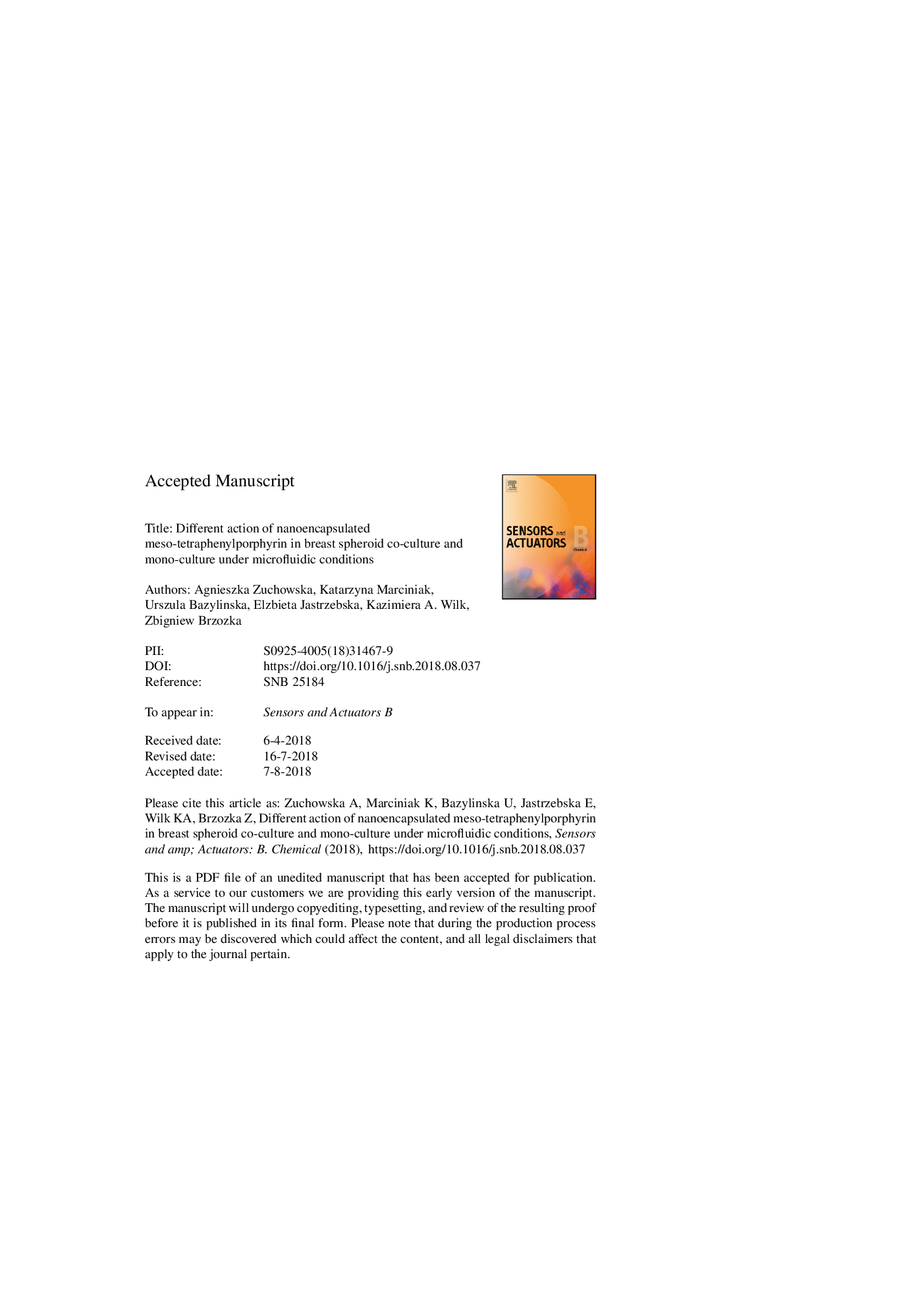| Article ID | Journal | Published Year | Pages | File Type |
|---|---|---|---|---|
| 7138545 | Sensors and Actuators B: Chemical | 2018 | 28 Pages |
Abstract
In cancer research, it is important to develop culture models which will reproduce natural environment of tumor, e.g. three-dimensional (3D) cell arrangement, cell-cell interactions, the presence of various cell types. To meet the demands, it is proposed a new microfluidic culture model based on spheroids composed of a co-culture of cancer and non-malignant mammary cells. This culture model is utilized for evaluation of photodynamic therapy (PDT) effectiveness with a nanoencapsulated photosensitizer (meso-tetraphenylporphyrin, nano-TPP). Thanks to such a model the mechanisms of breast cell response in spheroid co-culture and mono-culture could be investigated under microfluidic conditions. It is observed that the breast spheroid co-culture exhibits resistance to PDT procedures more than the spheroid mono-cultures. This effect could result from a different accumulation of nano-TPP and different ROS generation in both spheroid models: mono- and co-cultures. Summarizing, in this paper an innovative approach for the development of a 3D in vitro breast tumor model and its usage for the evaluation of PDT procedure effectiveness is presented.
Related Topics
Physical Sciences and Engineering
Chemistry
Analytical Chemistry
Authors
Agnieszka Zuchowska, Katarzyna Marciniak, Urszula Bazylinska, Elzbieta Jastrzebska, Kazimiera A. Wilk, Zbigniew Brzozka,
